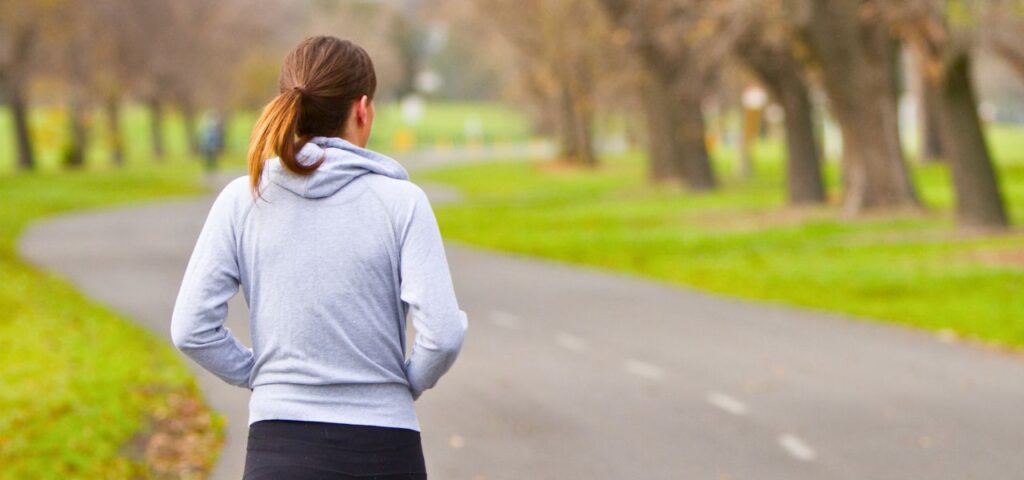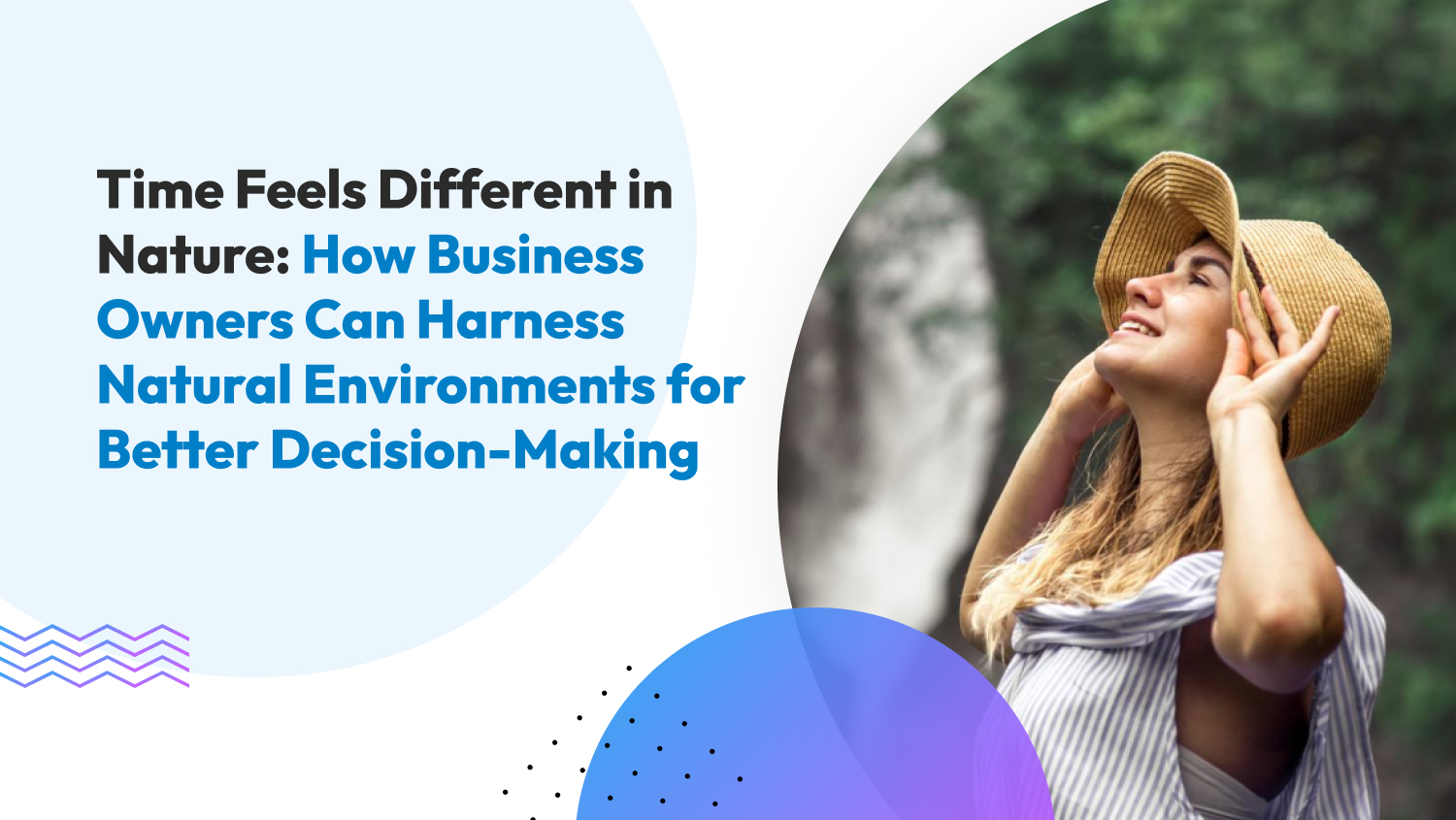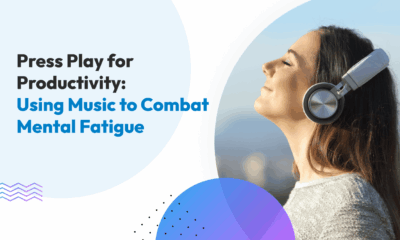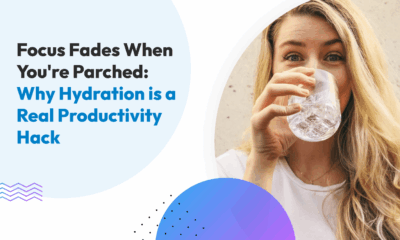Science Says
Time Feels Different in Nature: How Business Owners Can Harness Natural Environments for Better Decision-Making
Do you ever feel like time is racing by as you manage your business? A recent analysis of research suggests that spending time in nature might help you develop a healthier relationship with time – a crucial asset for any business owner. The perspective analysis by Correia published in People and Nature examines multiple studies, which collectively demonstrate how natural environments can fundamentally change our perception of time, with significant implications for business decision-making and productivity.
The Science Behind Nature and Time Perception
According to one study referenced in the analysis (Berry et al., 2015), our experience of time changes significantly when we’re in natural versus urban environments. The research found that exposure to nature affects our time perception in two key ways: it makes time feel longer, and it helps us develop a more balanced perspective between past, present, and future.
In the Berry et al. study, researchers had undergraduate students complete tasks while watching videos of either natural or urban settings. The results were striking – students who watched nature videos consistently perceived time as passing more slowly than those watching urban scenes. Think about what this means for a business owner’s workday. A freelance writer working on tight deadlines, for instance, might experience less time pressure when writing in a natural setting versus a busy cafe.
The study notes that “people who spend time in nature tend to overestimate the length of that experience,” suggesting that nature might be an antidote to the sensation of time flying by that many entrepreneurs experience. For a business coach conducting client sessions, this could mean that outdoor walking meetings might feel more substantial and unhurried than office-based ones.
What’s particularly interesting is that this effect doesn’t require lengthy nature exposure. Even brief periods in natural settings showed measurable impacts on time perception. This makes it practical for busy business owners to implement, whether you’re a consultant between client calls or a small retail shop owner on your lunch break.
Action Item: Block out 30 minutes in your schedule this week to work in a natural setting – whether it’s a park, garden, or even a window view of nature. Note how your perception of time during this session differs from your usual workspace.
Nature’s Impact on Strategic Thinking
The research reviewed by Correia demonstrates that nature exposure affects what researchers call temporal perspective – essentially how we balance our view of past, present and future events. The analysis found that nature experiences can help people develop a more positive outlook across different time perspectives, rather than focusing solely on one timeframe.
Take a web developer, for instance. When working on a complex project, they often need to balance multiple timeframes – learning from past project challenges, managing current client needs, and planning for future technological changes. The research suggests that conducting project planning in natural settings could help maintain this crucial balance.
For small business owners with teams, this finding has interesting implications for planning sessions. A boutique owner might find that holding their seasonal inventory planning meeting in a garden setting helps the team better connect past sales data with current trends and future buying decisions. The study suggests that nature exposure helps reduce “rumination” – excessive focus on past events – which could help teams move forward more effectively.
Correia specifically noted that “experiencing periods of time in nature can induce a more positive outlook of the present and facilitate the flow between past, present and future temporal frames.” For a graphic designer planning their project pipeline, this could mean that reviewing their workflow while taking a nature walk might lead to better-balanced project timelines and more realistic deadlines.
Action Item: For your next quarterly planning session, consider booking an outdoor location or a meeting room with natural views. Create a pre- and post-session assessment to measure any differences in the breadth and depth of your strategic thinking.

Managing Work Pressure Through Nature Exposure
The research revealed a profound connection between environment and perceived time pressure. Correia’s paper found that ‘modern societies are increasingly burdened by ‘time scarcity’ with dire consequences for human health and well-being.” This pressure is particularly acute for business owners managing multiple responsibilities.
What makes this finding particularly relevant is how it manifests in different work contexts. A social media manager, for example, typically deals with constant notifications and rapid-fire content demands. The research suggests that their experience of time pressure might be amplified by typical urban office environments. However, the study found that “nature experiences can influence human sense of time by (i) extending human perception of temporal duration and (ii) shifting time perspectives” – essentially making time feel less rushed.
Consider an accountant during tax season. The study suggests that taking breaks in natural settings might help them experience time differently, potentially reducing the stress of tight deadlines. Specifically, researchers found that participants consistently reported feeling less time pressure when exposed to natural environments, even if the actual time available remained the same.
For business owners with teams, this has interesting implications for workplace design. While not every business can relocate to a nature preserve, the research suggests that even views of nature can influence time perception. A small software development company, for instance, might find that adding plants and natural elements to their workspace helps team members better manage project time pressure.
Action Item: Identify three opportunities in your weekly schedule where you could incorporate nature exposure – perhaps morning planning sessions, afternoon breaks, or end-of-day reviews. Document how these nature-based moments affect your sense of time pressure and decision-making.
The Impact on Decision-Making Quality
A particularly intriguing finding from the study relates to how nature exposure affects cognitive processing. Correia highlights ‘the context of increasing time scarcity in modern urban societies with dire consequences for human health and well-being,’ which has particular relevance for us. Nature’s effect on time perception offers a potential remedy, with important implications for business decision-making.
Take a real estate agent evaluating multiple properties. The study suggests that conducting property analyses in a natural setting might lead to more thorough consideration of each option. The research found that participants in natural settings showed “less focus on a single-time perspective,” which could help in weighing both immediate returns and long-term property value.
For solopreneurs handling multiple client projects, this finding could be transformative. A freelance photographer, for instance, might find that reviewing client proposals in a park setting helps them better balance immediate profit opportunities with long-term portfolio development. The study indicates that nature exposure helps create what researchers call a “balanced time perspective,” potentially leading to better-quality decisions.
Correia’s review cites research which found that “people experiencing feelings of boredom, anxiety or awe often overestimate the duration of time intervals.” For business owners, this suggests that high-stakes decisions might benefit from nature exposure. A startup founder making funding decisions, for example, might find that walking meetings with potential investors in natural settings lead to more measured evaluations.
Action Item: Choose one significant business decision you need to make this month. Plan to spend time analyzing it both in your usual work environment and in a natural setting. Compare your thought process and final decision rationale between the two environments.

Improving Creative Problem-Solving Through Natural Time Perception
One of the most fascinating findings in Correia’s analysis relates to how nature changes our cognitive processing. The review notes that “the type and amount of nature exposure and individual characteristics of the experiencer influence nature regulation of human sense of time.” This finding has particular relevance for business owners engaged in creative work or innovative problem-solving.
Consider an interior designer facing a challenging client brief. The research suggests that their problem-solving approach might be fundamentally different in a natural setting versus an urban environment. The study found that participants in natural settings experienced a phenomenon where time feels more expansive – what Correia describes as people ‘overestimating the length’ of their time experience in natural environments. For our interior designer, this could translate to more thorough exploration of design solutions rather than rushing to the first viable option.
For tech entrepreneurs developing new products, this temporal effect could be particularly valuable. The study notes that “people experiencing feelings of boredom, anxiety or awe often overestimate the duration of time intervals.” While anxiety-induced time dilation might be counterproductive, the awe response often triggered by natural settings could create mental space for innovation. A software developer working through a complex coding challenge, for instance, might find that solution pathways become more apparent during a nature walk than during hours of desk-bound debugging.
Action Item: Set aside one hour this week for your most challenging creative task. Split the time between your usual workspace and a natural setting. Document any differences in your ideation process and the quality of solutions generated.
Implementing Nature-Based Work Strategies
Correia’s analysis provides clear evidence that nature exposure affects time perception, but implementing these findings requires thoughtful planning. The study emphasizes that “the influence of nature on cognitive function and well-being can change depending on whether nature is experienced directly or indirectly.”
For solopreneurs, this might mean restructuring your workday to incorporate nature strategically. A business consultant might schedule client calls in the morning when fresh from a nature walk, leveraging the balanced time perspective the research suggests nature provides. If you have a team, consider how to incorporate nature exposure in ways that enhance rather than interrupt workflow. A small marketing agency might institute “green breaks” where team members are encouraged to step outside between projects.
Correia noted that even “the type and amount of nature exposure and individual characteristics of the experiencer influence nature regulation of human sense of time.” This suggests that business owners should experiment to find their optimal nature-work balance. A virtual assistant working remotely might benefit from different nature exposure patterns than a retail store owner who’s tied to a physical location.
Action Item: Create a two-week experimental schedule incorporating nature exposure at different times and durations. Track metrics relevant to your business (productivity, creativity, decision quality) to determine your optimal nature-work integration pattern.
Limitations and Future Considerations
While Correia’s analysis shows promising results, scientific transparency requires acknowledging its limitations. The studies reviewed primarily focused on relatively short-term nature exposures and often used student participants rather than business professionals. Additionally, most research was conducted in Western contexts, which might not fully translate to all cultural business environments.
That said, the consistent finding that nature exposure affects time perception across multiple studies suggests robust potential for business applications. For business owners interested in evidence-based productivity improvements, these findings offer a compelling starting point for workplace innovation.

Conclusion: Harnessing Nature’s Time-Altering Effect for Business Success
Correia’s analysis presents compelling evidence that our perception of time – a critical resource for any business owner – can be significantly influenced by our environment. For business owners constantly seeking ways to improve decision-making, reduce stress, and enhance productivity, nature’s effect on time perception offers an evidence-based tool that’s both accessible and cost-effective.
Whether you’re a solopreneur handling every aspect of your business or managing a small team, the study suggests that strategic exposure to natural environments could help you develop a healthier relationship with time. From improved strategic planning to more balanced decision-making, the benefits extend beyond simple stress reduction to potentially fundamental improvements in how you operate your business.
The key isn’t to completely transform your work environment overnight or to move your office to a forest. Instead, the research suggests that even modest exposure to natural settings can influence how we experience and use time. As with any business strategy, the goal is to find the right balance – integrating nature exposure in ways that enhance rather than disrupt your business operations.
As businesses continue to evolve and adapt to changing demands, understanding and leveraging the relationship between nature, time perception, and productivity could provide a valuable competitive advantage. After all, in business, how we perceive and use time often matters as much as the actual time we have.












